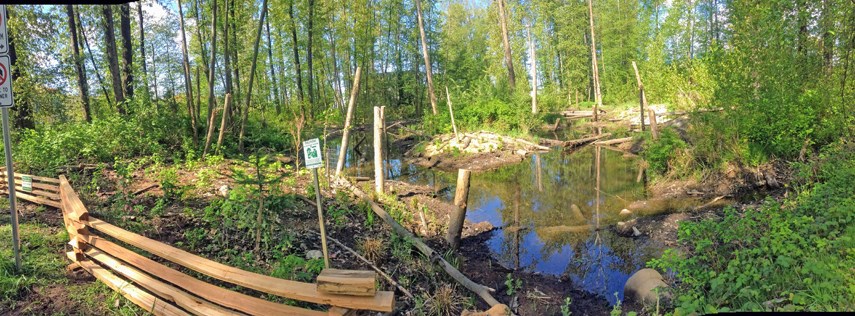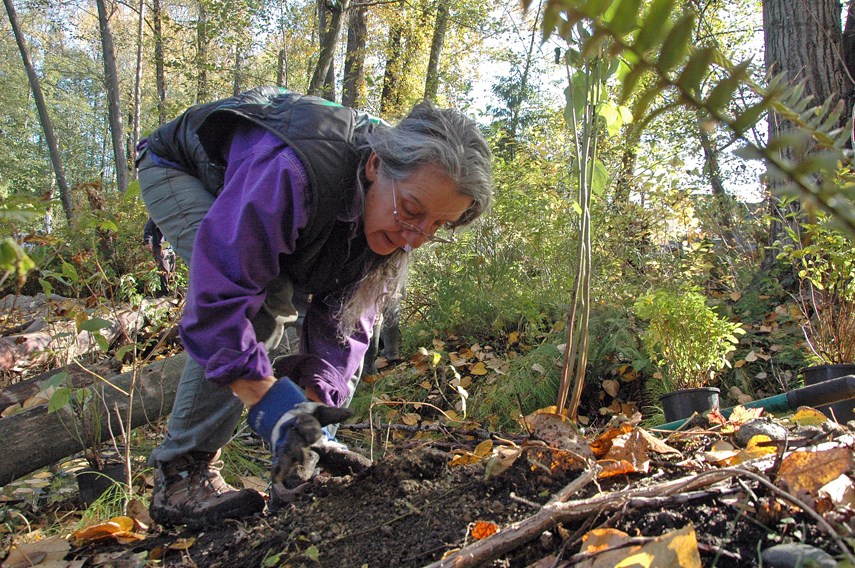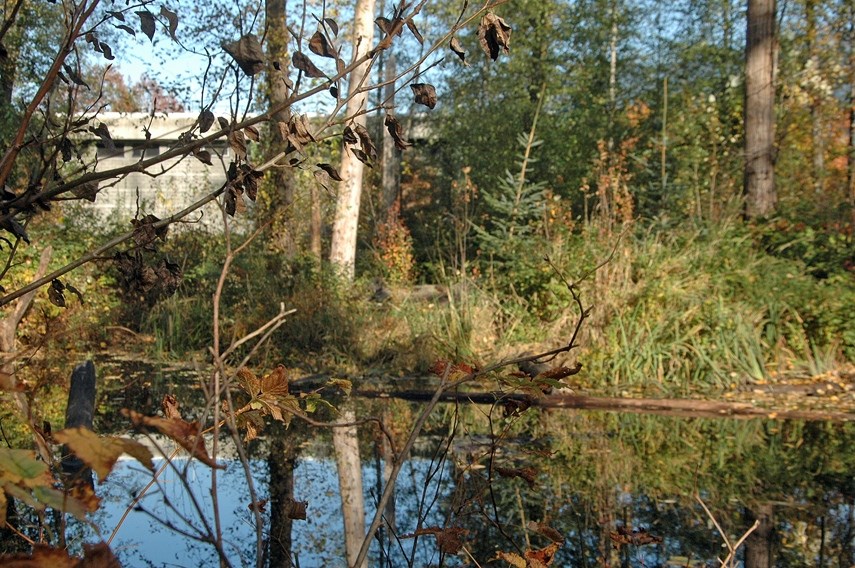For people who think it’s not worth the effort, time and occasional back-breaking labour involved in revitalizing an urban waterway, Krystal Brennan has a simple message: “They can be saved.”
She’s talking about the waterways – not necessarily the cynics.
For the last seven years, groups like Wildcoast Ecological Society, of which Brennan is the outreach co-ordinator, as well as project partners Echo Ecological and a host of streamkeepers, green thumbs and volunteers, have helped transform Mackay Creek in North Vancouver into a welcome environment for native plants, birds and other wildlife.
“The site has its own microclimate now, it’s quite amazing – because it’s grown in so well,” says Brennan.
But there’s still more work to be done.
Earlier this month, Echo Ecological put out a time-lapsed video on YouTube of the work that has been going on at the Mackay Creek headwaters since 2013 in order to help preserve the habitat for salmon and the species that depend on them.
The video has racked up more than 5,000 views since it was released.
“We were a little bit surprised with the response, but we wanted to showcase all of the hard work that goes into preserving an urban stream like this,” says Brennan. “I think a lot of people don’t really realize a lot of the behind-the-scenes things that streamkeepers might do.”
Like most great projects, this one got underway due to the enthusiasm and perseverance of students.
In 2013, students in BCIT’s ecological preservation program were tasked with picking a site and coming up with a plan to restore it as part of a class project.

Brennan, who officially came on board a few years later, remembers even then there were scores of invasive plants and debris inhibiting migrating salmon. The area, which had been neglected for decades, was also just generally a bit of an eyesore.
Thousands of paid and volunteer hours have been put into restoring the creek, located in North Vancouver’s Capilano Highlands neighbourhood, over the years.
The creek flows down near the top of Grouse Mountain, through local coniferous rainforests, and crosses both North Vancouver City and District into Mackay Park. From there, the creek becomes an estuary which flows under the train tracks adjacent to Marine Drive and into Burrard Inlet from a culvert.
Since greening up the area, Brennan says there’s more songbirds and seabirds using the creek and park area, as well more coho and chum.
“There has been an increase in salmon coming up the creek,” she says.
Last year, a wetland area and pond near the creek, located near the intersection of West First Street and Lloyd Avenue, was restored by a large group of volunteers.
Prior to restoring that part of the creek, it wasn’t even able to function as a proper wetland, according to Brennan, who notes it was completely filled in by invasive species of grass that had sucked up the water table.
“It does have water now,” she says, adding there’s now ducks, raptors and other woodland creatures frequenting the area, and that the group also installed willow stakes to help stabilize the nearby streambank. “We know it’s being used as it’s supposed to.”
And while they don’t have long-term data, perhaps the groups’ best evidence for the success of their work so far has been the comments they’ve received from gleeful passersby.
“I don’t know if we quite knew what we were getting into, but we were able to create this amazing habitat for birds and mammals,” says Brennan. “We even found anecdotal evidence of people that worked in nearby offices who walked by and said they had never seen deer come to that site in the last decade.”

There’ still more work to be done, notes Brennan. There’s always invasive plants and species to curtail and new additions to implement to extend the sustainability of the area.
The groups have had to proceed cautiously, especially when it comes to their usual annual volunteer events, in the era of COVID-19.
The District of North Vancouver and the federal government’s EcoAction Community Funding Program have been great supporters and assets over the years too, she says.
Although the pandemic has caused some grant funding to dry up, Brennan’s still hoping to continue their longstanding Mackay Creek project going forward.
“This has been a special project for us that started seven years ago now and something we continue to work on because we also wanted to show the value of urban habitats like this one,” she says. “I think often times they get forgotten.”



